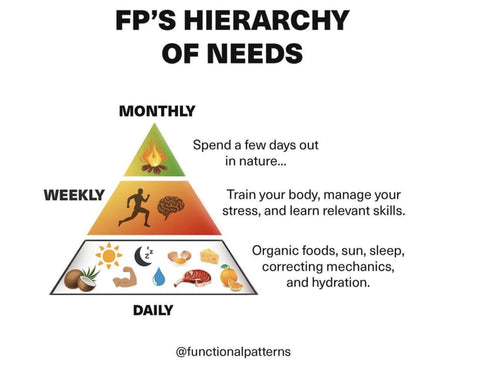Introduction
Arthritis. The word itself has a kind of feeling to it. Anyone who knows someone with it can picture it; anyone who’s got it can’t get it out of their heads. Whether it be an ache in the knees for the first few hours of the morning or neck arthritis that flares every time you turn your neck, ‘pain relief for arthritis’ is a much-too-often searched expression for our liking.

There are many current supposed remedies, medicines, diets, movements and routines that have various levels of success in arthritis pain relief. From ice packs for knees, to tylenol for arthritis, from ketogenic diets to yoga stretches - all these modalities offer a short term solution that only addresses the symptoms rather than the system as a whole. As a a result it's hard to actually wade through the endless websites and articles, so hopefully after reading this one you’re in a better place to help yourself or the many people you know that suffer from this potentially debilitating condition and potentially help yourself with actual pain relief for arthritis.
Arthr-(itis)
Let's discuss the role of inflammation in arthritis. When you have constant inflammation through a joint, for multiple reasons, your body breaks down the cartilage present on the joint surfaces. Traditionally in the industry we have thought of bones as ‘rubbing on each other’ but due to the research of a few good scientists we understand now that our tissue kind of ‘floats’ in a web of connective tissue called fascia (you can read more on our thoughts on fascia HERE).
Although there are absolutely countless factors that will increase or decrease inflammation in the body (and therefore decrease the need for pain relief for arthritis), lets keep it simple by breaking it up into three distinct reasons;
- Your movement on a daily basis is more degenerative than regenerative
- Your recovery is more degenerative than regenerative
- You make lifestyle decisions that influence the effectiveness of the first two reasons
The role of Fascia
From a movement point of view, we can think of the myofascia of the body as something that stores and then disperses force. In a perfect world, force will run through every single muscle from our toes to our heads as we sprint at 25 mph on an open field…. Sounds nice huh? The actual reality of it is that we have preferential rotations and patterns we tend to overload during our lifetime, due to things like side dominance, sports history and occupation. Over time, this will cause an inefficient storing and dispersal of force, resulting in the ‘bleeding’ of energy. In the case of arthritis, this is why it is irregular to see it (specifically osteoarthritis) in the younger generation; they haven’t had enough time to overload these ‘faulty’ patterns. By assessing your movement and posture you can get a real appreciation of just how influential these patterns can be on your structure.

The many layers of Recovery
Second on the list is your recovery; this one is simple and one that not many people can tick off. Do you achieve adequate sleep? Do you block artificial light especially at night time? Do you respond well to stressful events? Do you regularly get adequate sunlight? All of these factors and more enable the energy producing cells of the body, the mitochondria, to become more efficient in their functioning, resulting in a more efficient use of energy without the inflammation, to recover better and therefore promote an environment where our body can regenerate.
How our Habits impact our Health
Third of all is the stuff no one wants to talk about; our crutches, our bad habits, our achilles heels. We all know a few of these; alcohol and its ability to blunt recovery, ruin sleep and overburden the organs associated with clearing up waste (the liver, kidneys etc) is already extremely well documented, whilst overuse of social media/mobile phones has had a spotlight shone on it in recent years as the many different platforms compete to ruin your dopamine response along with your eyesight and sleep. Even crappy take away food is something that we’ve all reached for in the past when life gets a little too stressful. But little things like twitchy, neurotic behavior, caffeine use and excessive grain intake can all affect our ability to regenerate in movement and in resting.
So we have two options it seems to achieve arthritis pain relief:
- We do nothing, continuing on with the same activities and lifestyle choices that got us here
- We change the way we think about pain/inflammation, and orient our daily choices around functional movement, environments and behaviors
Obviously number two is the more difficult of the strategies to adopt; its uncomfortable and it can be frustrating, but the payoff is ultimately a million times less frustrating than the shoulder arthritis that gets in the way of you throwing a ball to your teenager, or the spinal arthritis that wakes you up every morning.
At Functional Patterns, we have a hierarchy of needs that we believe covers the three points above:

What we notice almost exclusively is that when people orient their lives around this hierarchy, the need for arthritis pain relief, let alone any condition’s pain relief seems to lessen. This in turn means you can focus less on the symptoms you’re not getting anymore and more on getting out into nature and doing the things that your body was made to do; walk, run, stand and throw.
Conclusion
By addressing your body's ability to regenerate through optimizing recovery, eliminating your crutches and improving your relationship with gravity, you put yourself in the best possible position to achieve pain relief for arthritis as well as potentially how to prevent arthritis in the first place.







